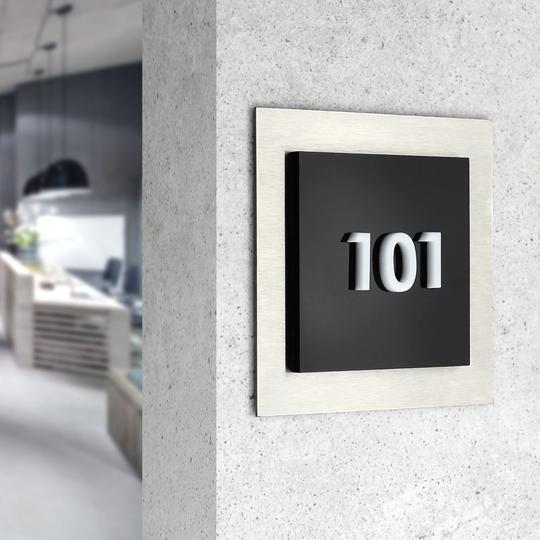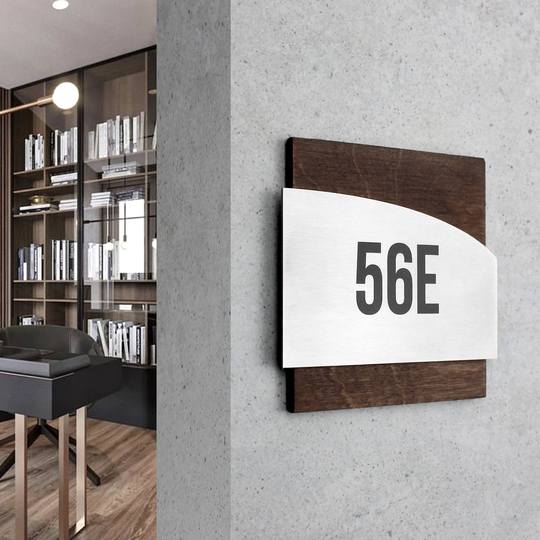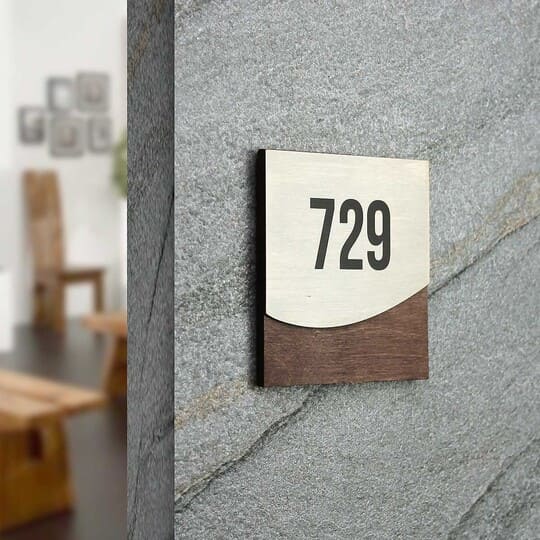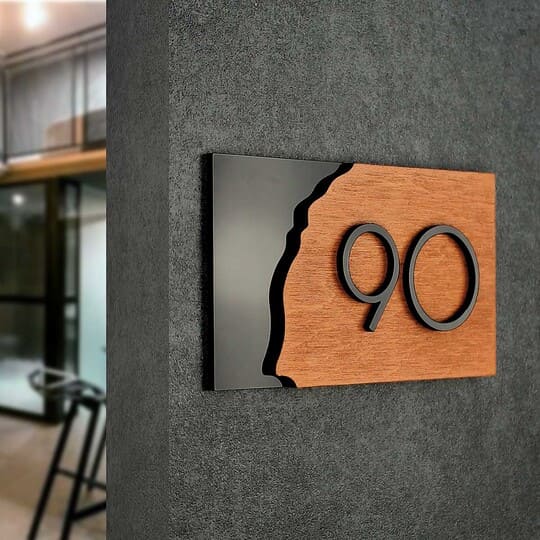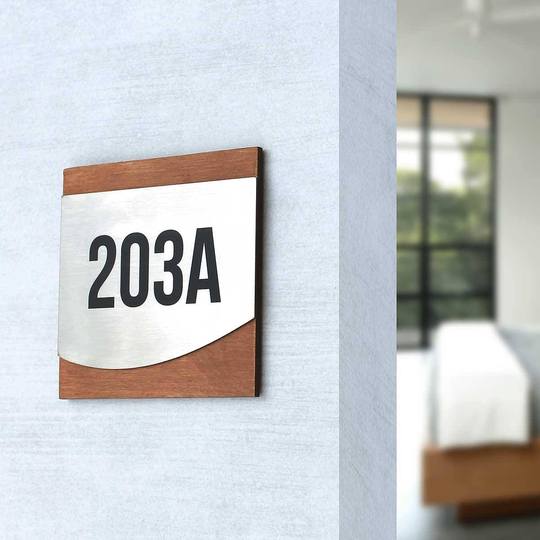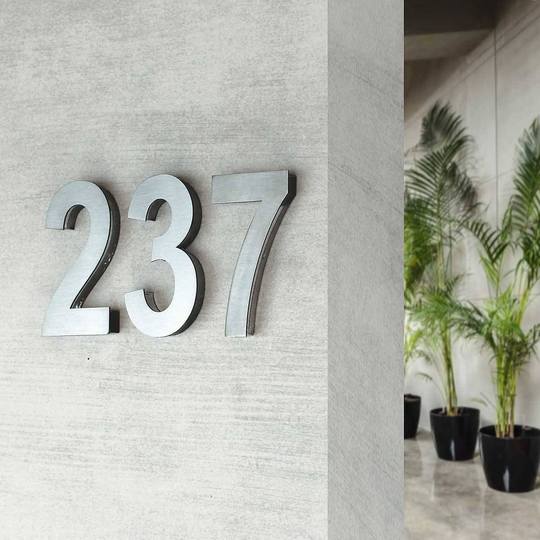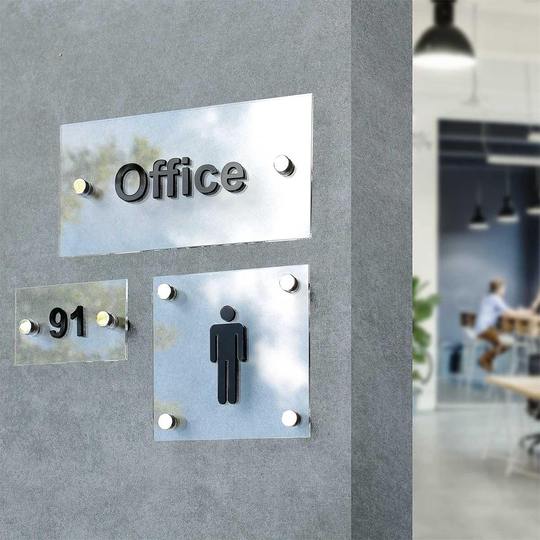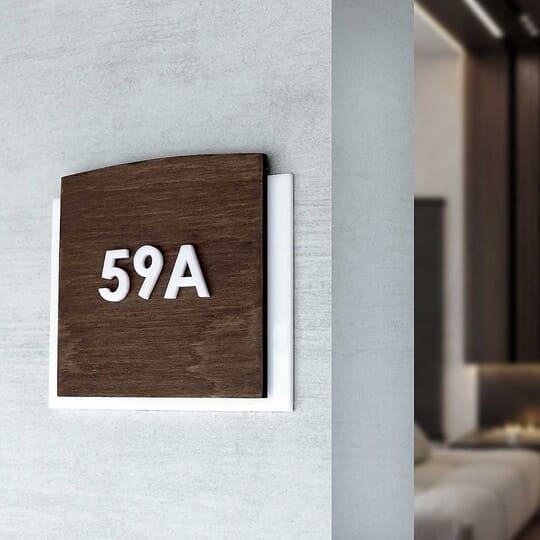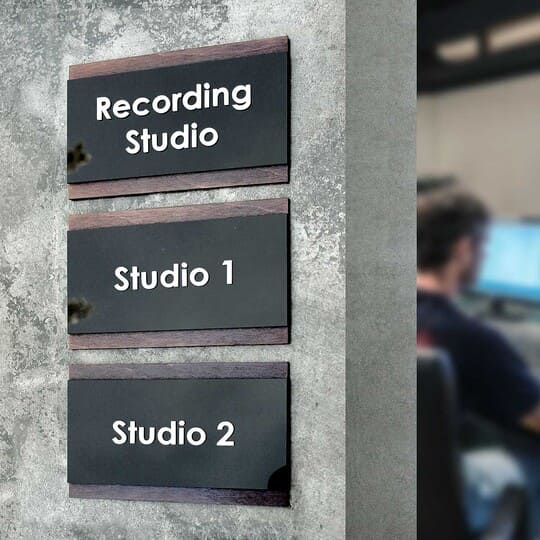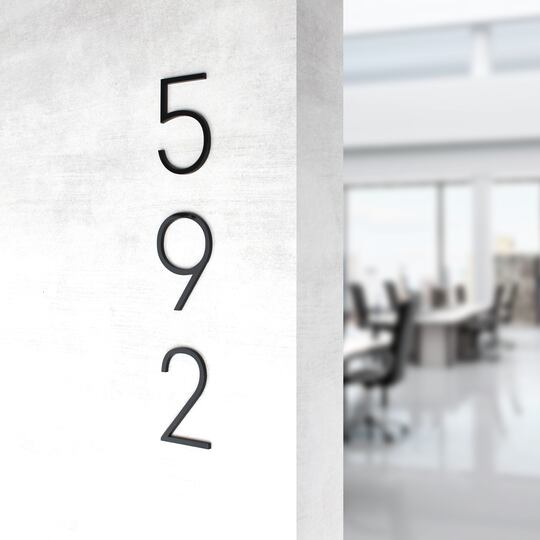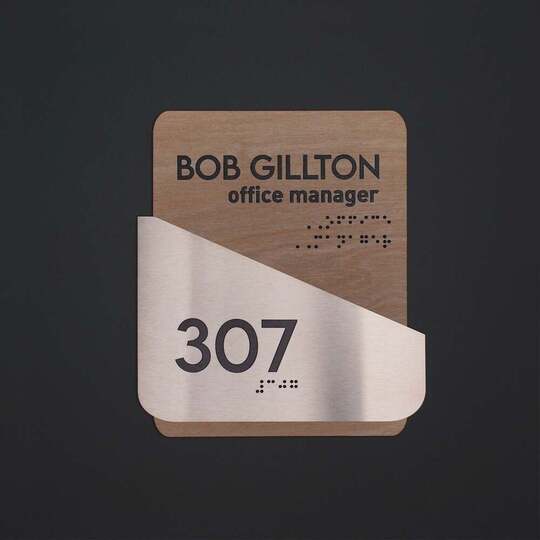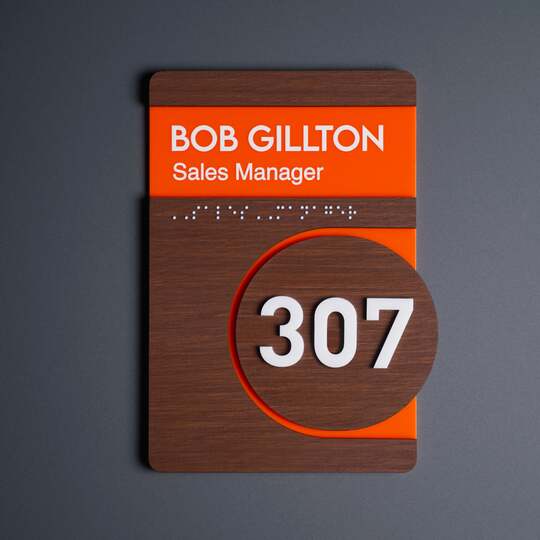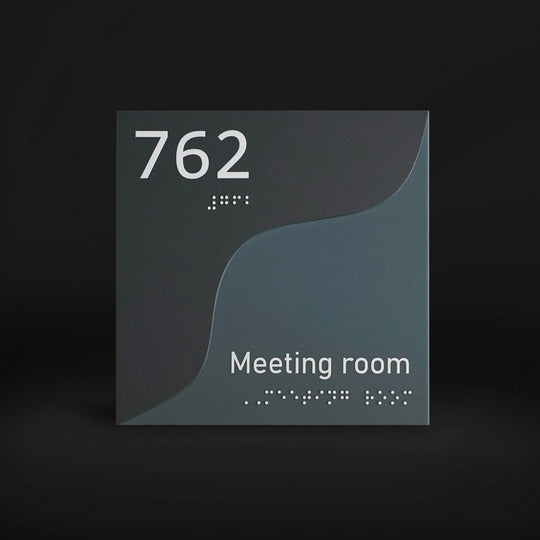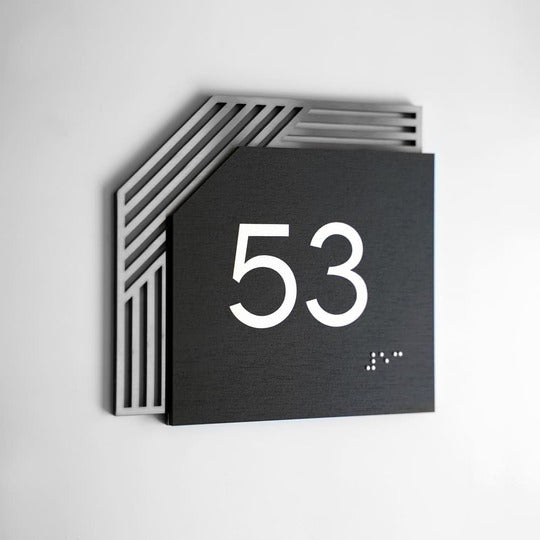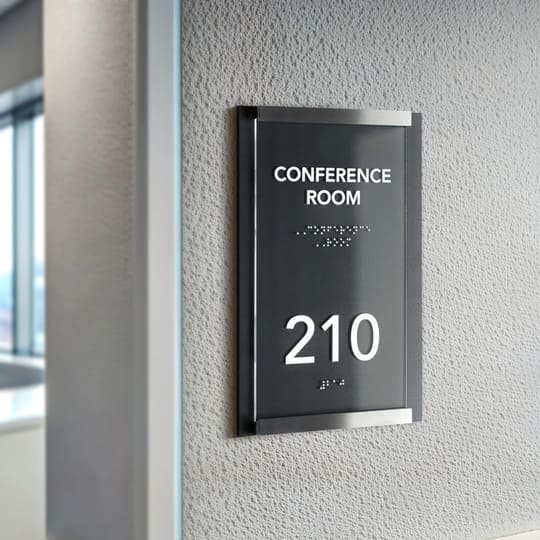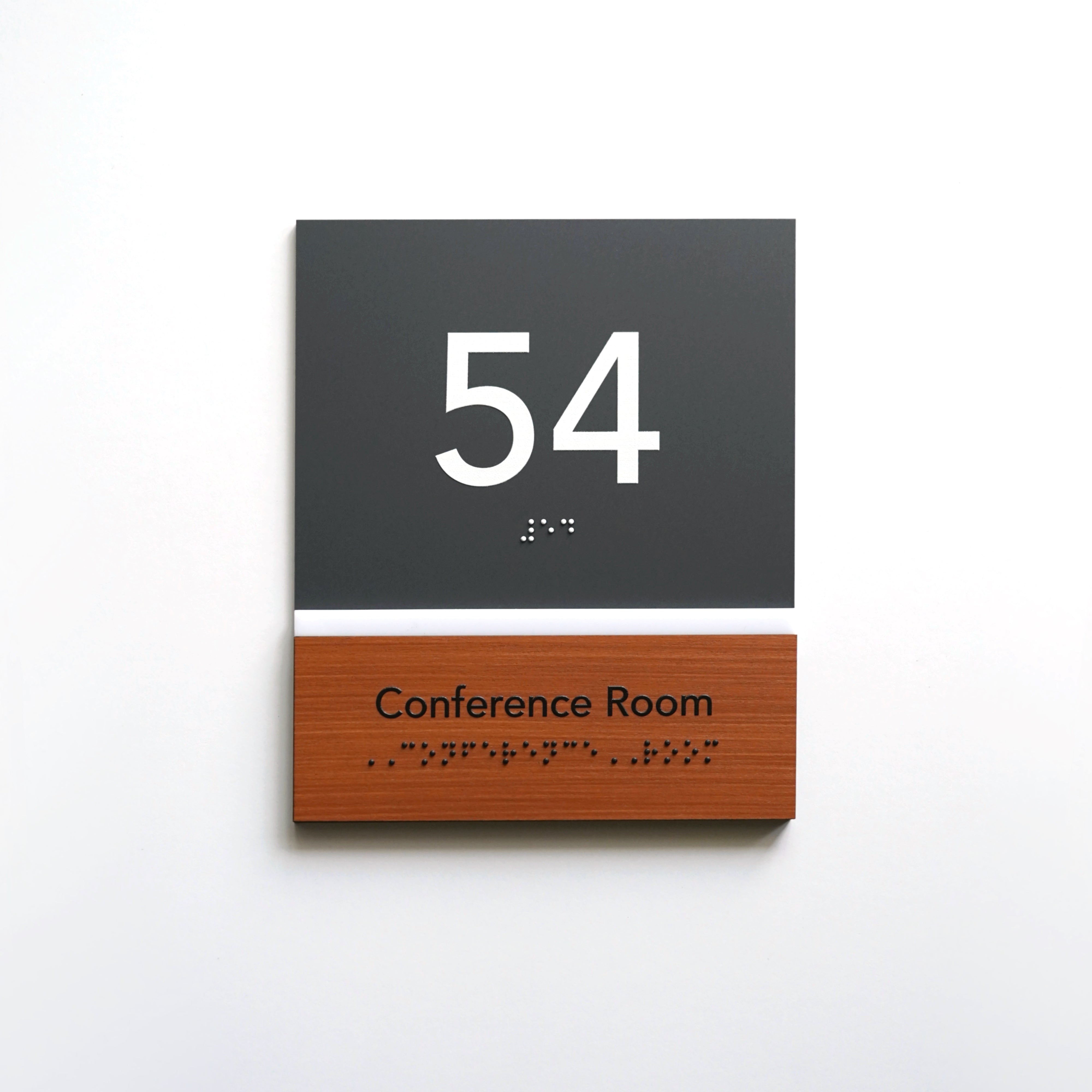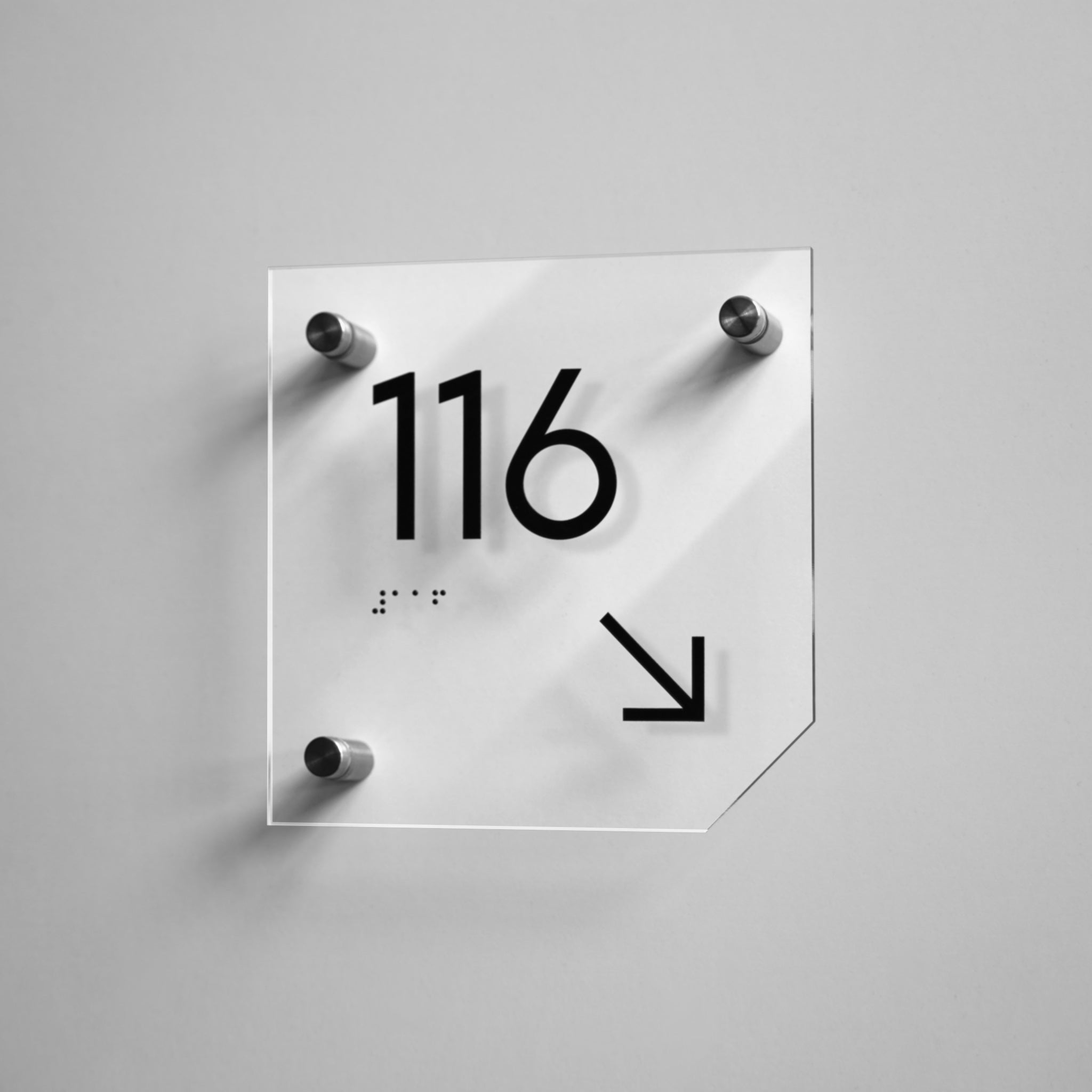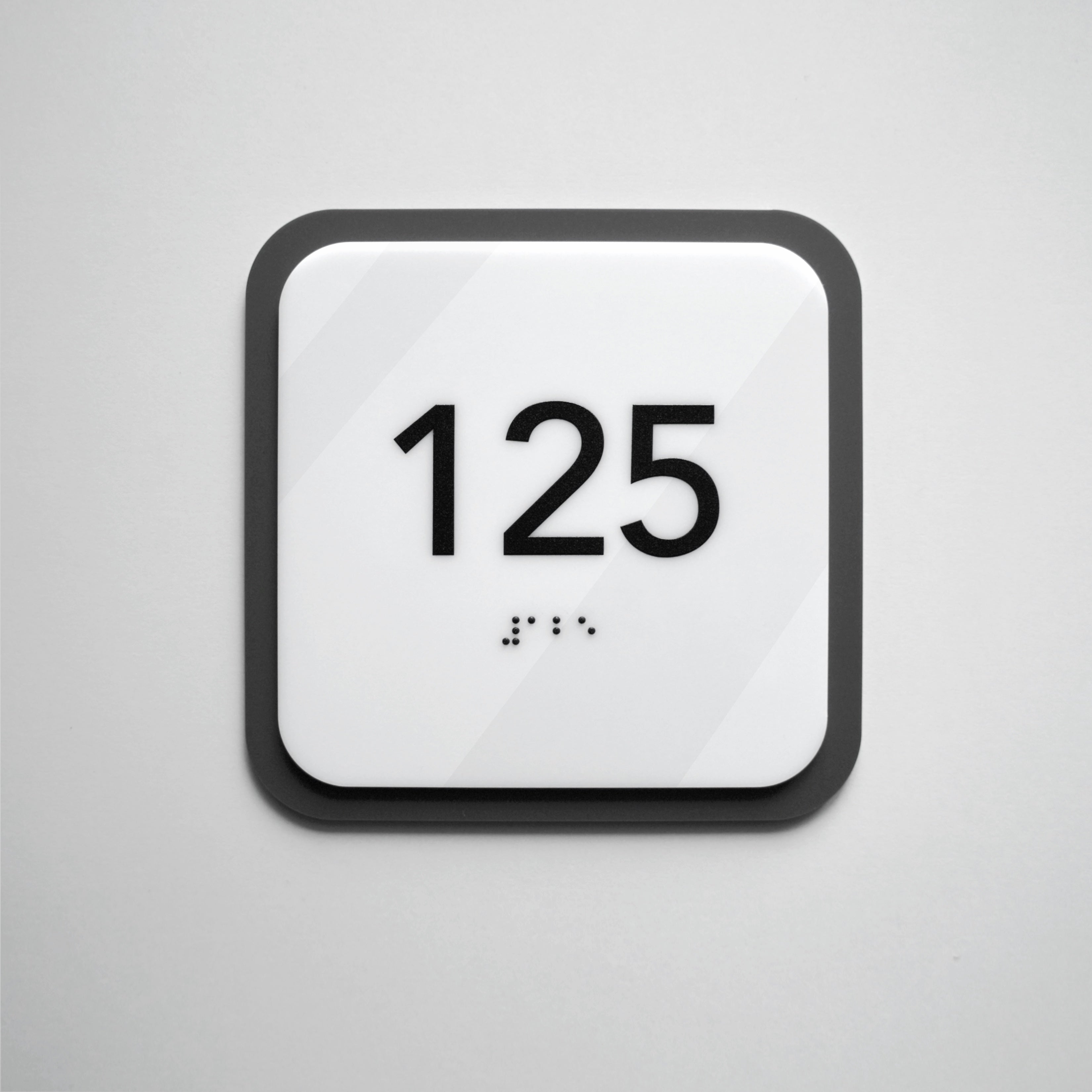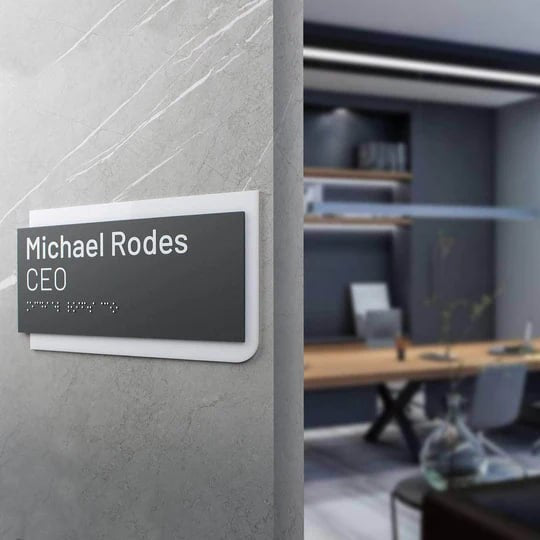
Tactile Braille signs: aesthetics that cares
In today's world, inclusivity is a standard that forms an idea of the quality of space, service and the overall image of the business. Ensuring accessibility for people with visual impairments is no longer just a social gesture — today it’s an essential part of responsible and forward-thinking environmental design. That’s why tactile Braille signs are now an integral and necessary element not only for government institutions and medical facilities but also for commercial spaces. In particular, Braille hotel signs are increasingly recognized as a hallmark of superior service and compliance with essential accessibility standards.
These signs not only help individuals with visual impairments navigate spaces safely and independently but also enhance the overall accessibility of a facility. Beyond functionality, signage materials play a crucial role — ensuring durability, resistance to wear, and contributing to the overall aesthetic of a space.
Ultimately, Braille tactile signs are a part of a holistic approach to creating a comfortable, functional, and inclusive environment — one that reflects care, attention to detail, and respect for every visitor.
In this article, we’ll explore why signs for people with disabilities are more than just a matter of compliance — and how they can become a meaningful part of your interior and brand reputation.
We’ll also delve into the best materials for crafting aesthetic, visually refined signs that combine durability with a contemporary look. You’ll discover why tailored solutions, well-thought-out inclusive design, and strict adherence to accessibility standards aren’t just trends but vital contributions to your brand’s identity and image.

Inclusive signage: the importance of Braille in public spaces
Visually impaired individuals face daily challenges when navigating unfamiliar environments. Braille tactile signs — featuring raised dot patterns — serve as reliable guides, allowing individuals to move safely and independently through public spaces, offices, hotels, and medical facilities.
Information conveyed through touch opens new possibilities, fostering confidence, reducing stress while moving through spaces, and enabling greater autonomy in everyday life. Additionally, incorporating such solutions into public areas demonstrates care and social responsibility, reinforcing a business’s or organization’s openness to diverse groups of visitors.
The importance of Braille on such signs extends beyond affordability — it helps create an inclusive environment where everyone feels equally valued. It’s a fundamental element of infrastructure for signs aimed at people with disabilities, meeting accessibility standards and reflecting respect for diverse visitors’ needs.

Cohesive design: merging aesthetics and functionality
Choosing high-quality materials is key to crafting durable and visually appealing signs. The material not only defines the appearance of the product but also influences its resilience to external factors, wear resistance, and integration into a space’s overall design. The most popular options include:
- Stainless steel: highly resistant to wear, suitable for both indoor and outdoor use. It withstands temperature fluctuations, moisture, physical contact, and heavy usage, making it particularly valuable in high-traffic areas.
- Wood: brings warmth and a sense of nature to interiors. This material carries character, emphasizing authenticity, softness, and coziness of the space. With its variety of textures and tones, wood enables designs ranging from sophisticated modern minimalism and richly detailed classic aesthetics.
- Acrylic: a lightweight and versatile material that helps implement a variety of design solutions. Due to its properties, it is an excellent solution for the realization of complex shapes, precise lettering, and finely detailed elements. Acrylic effortlessly blends with other materials while maintaining an elegant appearance.
These durable materials help preserve the visual integrity of an interior. They play an important role in creating a holistic image of space, adding visual expressiveness and stylistic cohesion to the space. As a result, the customer receives not just a sign, but an elegant design element with a cohesive look, reflecting the brand identity, its concern for comfort, style and attention to detail.
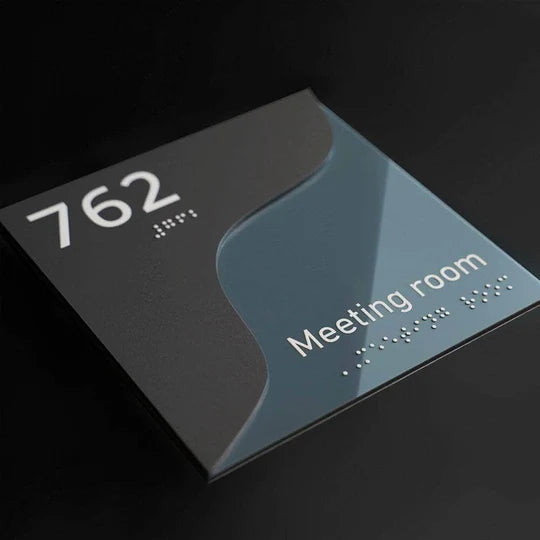
Premium interior design and inclusivity
Inclusive design does not contradict modern aesthetic standards — it enriches them, adding depth and meaning to a space. Inclusivity is about more than functionality; it's a conscious choice, a gesture of respect for everyone interacting with an environment. Accessible signs created with the needs of visually impaired individuals in mind can and should be a natural part of premium interior design.
These elements don’t disrupt the cohesive design concept — they seamlessly extend it. Materials with strong aesthetic appeal, precision craftsmanship, and a harmonious interplay of colors and textures allow these signs to be integrated so that they simultaneously solve functional problems and emphasize the visual integrity of the room.
Inclusive signs are a marker of elevated service quality. They reassure clients and visitors that a business truly cares — not just in words, but in action.

Signs for business: compliance with regulations
The installation of ADA signs is not merely an act of social responsibility; it is a legal necessity for meeting accessibility regulations. But what is Braille required for in ADA compliant signage? In particular, the disabilities act and other standards mandate the availability of such elements in public facilities.
These requirements go beyond formalities — they are intended to ensure real convenience and safety for all categories of users. Compliance allows businesses to operate transparently, mitigate legal risks, and reinforce their commitment to inclusivity. In many countries, failing to meet accessibility standards can result in fines or operational restrictions, making its implementation a strategic step.
This applies to shopping mall signage, signs of hotels, medical facilities, offices, and government institutions — anywhere readability, safety instructions, and user convenience are essential. Moreover, it enables companies to implement a strong corporate social responsibility policy, which increasingly influences customer trust, partnerships, and investors’ confidence.
In today’s competitive environment, compliance with the requirements of inclusiveness is a tool for building a positive brand image. Accessibility signals a business’s maturity and forward-thinking approach — one based on long-term values.

Custom Braille signs: adjustment to the client's needs
Every business has its own unique needs. Spaces, their functional purpose, style, aesthetics of the brand, as well as the flow of visitors — all this determines the specifics of the interior, and therefore the demands for navigation. In this context, individual solutions in the production of signs make it possible to take into account the specifics of the institution, its style and regulatory requirements. This includes door signs, room number plaques, directional and office signs with Braille — each is adapted to ergonomic efficiency, spatial logic, and user comfort, meeting the needs of diverse individuals.
This level of customization is particularly significant in industries where branding and aesthetics play a vital role, such as hospitality, corporate environments, and premium service establishments. Custom signs are part of the visual language of the brand, which emphasizes care, consistency and a modern approach.
Braille signage manufacturer Bsign offers tailoring to specific needs, creating products that meet high standards and business expectations. The production takes into account not only the appearance, but also the environmental conditions, wear resistance, ease of installation and updating, as well as compliance with accessibility standards.

Aesthetic signs: a combination of beauty and accessibility
Modern technologies in the field of design and production make it possible to create aesthetic signs that combine high functionality and refined visual presentation. These signs enhance spatial navigation while complementing the interior’s overarching style and character of the institution.
Innovative techniques such as UV printing enable exceptional detail precision and vivid imagery, even on textured surfaces. UV-printed signs provide long-lasting quality and resistance to wear, which is especially important in public spaces with high traffic.
Another aspect is the ability of aesthetic signs to harmonize with any design solution. Whether the space calls for classic elegance with rich accents or clean, minimalist high-tech design, the signs can be crafted with matching fonts, finishes, and color tones. The result is a modern signage design that blends in harmoniously — never competing with the architecture, but complementing it and supporting the overall spatial narrative.
Special attention is also paid to such factors as environmental conditions: moisture resistance, UV exposure, temperature fluctuations. These features make it possible to install signs both indoors and outdoors without compromising quality or appearance.

Accessible interior design for people with disabilities: a new approach
Creating an interior design for people with disabilities requires a thoughtful approach. It is important to consider not only aesthetics, but also functionality, ensuring equal conditions and enhanced accessibility for all.
These solutions have already become mandatory elements of signs for medical facilities, hotels, and other spaces where every detail matters. Inclusive design is no longer an afterthought but an integral part of a modern, responsible approach to space planning.

Tactile signage: inclusivity as a competitive advantage
Integrating Braille tactile signs into the space of the institution isn’t just about compliance — it’s about genuine care for customers. It is an investment in long-term benefits that enhances the customer experience, builds trust, and strengthens the brand's reputation.
In today's competitive environment, it is attention to detail, such as accessibility and inclusivity, that determines the level of service. Implementing such signs for business helps create a space where everyone feels confident, regardless of physical ability. This is particularly crucial for establishments with high social responsibility, such as medical centers, clinics, hospitals, and healthcare facilities.
In such cases, for example, medical office signs have to meet the highest standards of accessibility — they must be not only functional, but also intuitive, easily readable, resistant to wear and hygienic. Proper navigation in hospital corridors or offices, clear room labeling, and precise tactile design all contribute to reducing stress for patients and visitors.
These elements become an important part of inclusive design, which not only makes the spaces more visually appealing — it makes them genuinely accessible, convenient, and humane. They are able to emphasize the institution's commitment to the principles of responsibility, openness and a modern approach to service.
If you’re looking to enhance accessibility, comfort, and inclusivity in your space, reach out to our specialists. We’ll help you select the optimal signage solutions, ensuring compliance with accessibility, design, and durability standards.
Sign up for a free consultation today and take a step toward creating an environment where everyone feels welcome — and equal.
